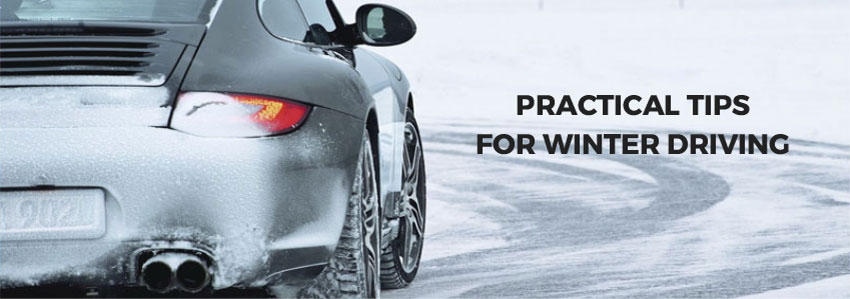Practical tips for winter driving
 Practical tips for winter driving
Practical tips for winter driving
Preventive driving is recommended all year round, but winter is the season when you need to pay more attention to this because the specific severe weather of this season is often the cause of major accidents, as well as car malfunctions.
According to studies conducted in the European Union, Romania is among the countries with the highest mortality rate from road accidents. Moreover, a study conducted by Kia shows that 48% of road accidents that occur in winter are caused by skidding.
How to prepare the car for the cold season?
Although tires are one of the most important elements to be replaced when winter approaches, they are not the only ones that count. Other major elements are:
Tires
Purchase high quality tires for the cold season and always keep a set of chains and a bag of sand in the trunk for long trips, when risking to get stuck in the snow.
Battery
The battery lasts much less in winter, which is why you must spare it and consider the factors that may shorten its lifespan. To make sure that you will not run out of battery, get used to start the engine before turning the lights, heating or windshield wipers on.
If the engine refuses to start at the first attempt, wait 30 seconds before the next attempt. If you do not use the car very often, remember to start the engine at least once a day or charge the battery before starting off after a long period of rest.
Antifreeze
Being used for preventing overheating or freezing, antifreeze is extremely important during winter. Buy a high quality antifreeze, which is resistant at very low temperatures. Consider its compatibility with the engine’s materials, and if you are not sure which is the most suitable product, seek appropriate professional advice.
Windshield and wipers
In winter, the windshield should be cleaned more often on the inside as well due to fog built up on the inside. If the windshield is not completely clean, your visibility will be considerably reduced and the risk of accidents will increase. Make sure your wipers operate at full capacity, if not replace them immediately.
Correct use of lights
During the cold season it is more likely to be forced to use more often all the lights fitted on your vehicle. Therefore, make sure the headlights, taillights, fog lights and brake lights are functional and powerful enough to be noticed by all traffic participants.
Preventive driving during winter
The key to preventive driving during winter is reducing speed. Beside this, here is how to avoid accidents and spare your vehicle:
- Brake earlier than usual – braking on a wet or icy road does not have the same efficiency as braking under normal weather conditions. Therefore, it is important to brake more quickly and give the vehicle the appropriate distance to slow down safely. A set of high quality winter tires will help you adjust distance and speed.
- Start more quickly – most drivers say they feel stressed when pressured by time. Due to the more difficult road conditions during winter, travel duration can double compared to the time needed for covering the same distance in other seasons. To avoid stress and dangerous maneuvers, plan your route depending on the weather.
- Operate the steering mechanisms with care – the risk of skidding is very high when you make a sharp turn or when you want to make an overtake. Stick with the absolutely necessary maneuvers.
The vagaries of winter are difficult to predict. Therefore, it is better to be prepared for all weather conditions. Both snow-rich winters and wetter ones pose an equal threat to your safety. Additionally, you can read more information about safe driving during rain.







